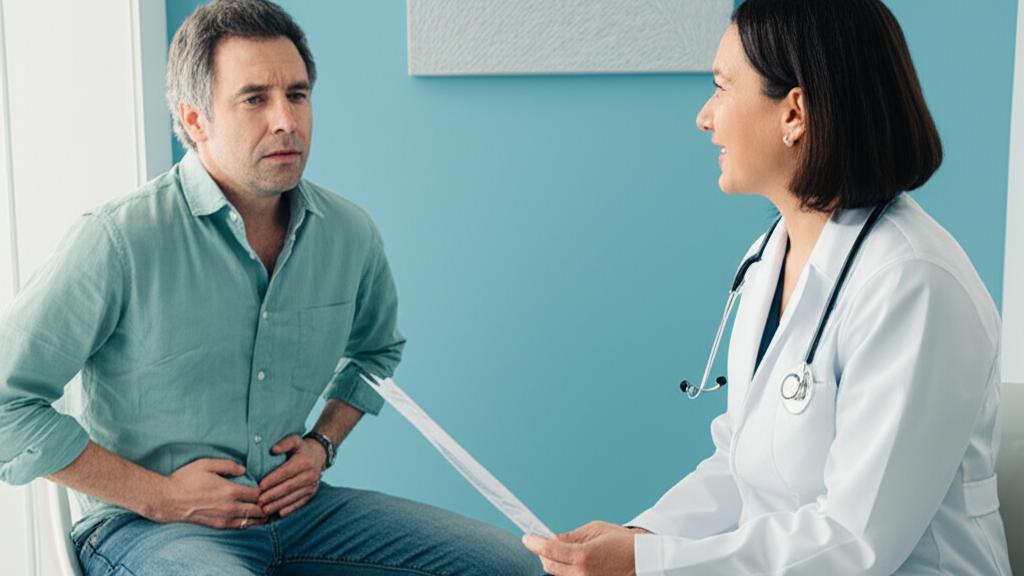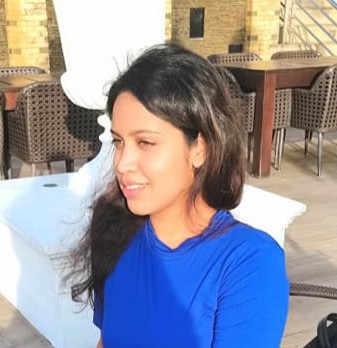I remember a patient, let’s call him David, coming into the clinic. He’d been wrestling with this nagging ache in his side for weeks, along with feeling more tired than usual. He’d brushed it off as stress, but a little voice kept telling him to get it checked. It’s that “what if?” feeling that often brings folks to see us, and it’s completely understandable. Sometimes, these symptoms can be our body’s way of flagging something like Cystic Kidney Disease.
So, What is Cystic Kidney Disease Anyway?
At its heart, Cystic Kidney Disease isn’t just one single thing. It’s really a term for a group of conditions where little fluid-filled sacs, called cysts, decide to set up shop in or around your kidneys. Think of your kidneys as amazing filters, working hard to clean your blood. When these cysts appear, they can sometimes get in the way of that vital job.
Some folks call it renal cystic disease – “renal” just means “related to the kidneys.” Now, some types of kidney cysts are surprisingly common. Simple ones? I see those pop up on scans fairly often, maybe in about 1 out of 10 people, and they often don’t cause any trouble at all. But other forms of Cystic Kidney Disease are rarer and can be more serious.
What Might You Notice? Signs and Feelings
The symptoms can really vary depending on the specific type of Cystic Kidney Disease you might have. But, there are some common signals your body might send:
- A dull ache or sharper pain in your back or sides (flank pain).
- Seeing blood in your pee (hematuria) – it might look pink, red, or cola-colored.
- Changes in urination, like trouble peeing or not going as much as you normally do.
- Sometimes, the kidneys themselves can get bigger, what we call enlarged kidneys.
- Persistent headaches.
- High blood pressure that’s new or harder to control.
- More frequent kidney infections.
- Developing kidney stones.
What’s Behind Cystic Kidney Disease?
The “why” can be different for everyone. Some types of Cystic Kidney Disease are linked to our genes – traits passed down in families. Others might develop as we get older, or as a result of other health conditions or even certain birth defects.
Basically, your kidneys have thousands of tiny tubes, the renal tubules, that do the filtering work. Cysts can form when tiny bits of these tubes get closed off and fill with fluid. Weird, right?
Who’s more at risk? Well, it varies, but generally, you might be more likely to develop some form of Cystic Kidney Disease if you:
- Are 50 or older (especially for simple cysts).
- Have chronic kidney disease (CKD) or are experiencing kidney failure.
- Carry a specific gene variation linked to these conditions.
And if cysts do start to cause problems, complications can include kidney failure, issues with heart valves (especially with a type called Polycystic Kidney Disease), or even cysts in other organs like the liver or pancreas. For infants with certain types, it can unfortunately lead to challenges with growth and development.
Figuring It Out: How We Diagnose Kidney Cysts
If you come to me with concerns, the first thing we’ll do is talk. I’ll want to hear all about your symptoms and your medical history. Then, to get a look at your kidneys, we’ll likely turn to imaging tests. These are pretty straightforward:
- An ultrasound (maybe even a prenatal one if cysts are suspected before birth). This uses sound waves to create pictures.
- A CT scan, which gives us more detailed cross-sectional images.
- An MRI, which uses magnets and radio waves for a very clear view.
We’ll also probably do some blood tests and a urine test (urinalysis). These help us see how well your kidneys are doing their filtering job.
Our Approach: Managing Cystic Kidney Disease
Now, for the important part: what can we do?
If you have simple kidney cysts that aren’t causing any symptoms, often the best approach is just to keep an eye on them. We might do an ultrasound once a year or so to make sure they’re not growing or changing. Easy does it.
If cysts are causing pain or other issues, we might suggest:
- Fine-needle aspiration: This is where we use a thin needle to drain the fluid from the cyst.
- Laparoscopic surgery: A minimally invasive surgery to remove or “unroof” the cyst.
If Cystic Kidney Disease leads to kidney failure, please know there are still very good ways we can support you:
- Dialysis: This is a treatment that helps clean your blood when your kidneys can’t do it well enough anymore.
- Kidney transplant: Receiving a healthy kidney from a donor.
- Medications to manage high blood pressure (antihypertensives).
- Lifestyle changes: These are so important! Regular activity, maintaining a healthy weight, and definitely avoiding tobacco.
Sometimes people ask if a polycystic kidney (a kidney with many cysts) should be removed. Usually, even if it’s not filtering waste perfectly, we prefer to leave it if it’s not causing significant pain or other major problems, as it might still help remove excess water. But if pain is severe, or there are other pressing symptoms, a nephrectomy (surgery to remove the kidney) might be considered. We’ll always talk through these big decisions together.
The Road Ahead: What to Expect
It’s true, for most types of Cystic Kidney Disease, we don’t have a cure right now. But – and this is a big but – we have many ways to manage the condition and slow down its progression, especially for common genetic forms like Polycystic Kidney Disease (PKD).
For folks with PKD, when kidney failure might occur can depend on the specific gene involved. For instance, people with a variation in the PKD1 gene might see kidney function decline sooner (often around their mid-50s) compared to those with a PKD2 gene variation (often in their early 70s). Every family’s experience can be a bit different, though.
Life expectancy with autosomal dominant PKD (the most common inherited type) has improved a lot. Many people live well into their 70s with good kidney function, thanks to better management. For a rarer form that affects babies (autosomal recessive PKD), the outlook can be tougher. Some little ones sadly don’t survive, and those who do will need lifelong medical care. Your healthcare team will always give you the clearest picture based on your specific situation.
Can We Prevent Cystic Kidney Disease?
This is a question I get a lot. And the honest answer is, for most types of Cystic Kidney Disease, especially the genetic ones, there isn’t a way to prevent them from happening in the first place. However, noticing symptoms early, getting a diagnosis, and working closely with a nephrologist (that’s a kidney specialist) can make a huge difference in slowing things down and managing symptoms.
Living Well: Day-to-Day with Kidney Cysts
If your kidney function is affected by cysts, your diet becomes extra important. We’ll likely get you to chat with a renal dietitian – they’re wizards at helping you figure out a kidney-friendly eating plan. This might mean:
- Cutting back on sodium (salt).
- Watching your protein intake.
- Focusing on heart-healthy foods.
- Limiting foods high in phosphorus and potassium (like some dairy, beans, bananas, oranges, and potatoes). It’s all about balance.
When to Call Us Urgently
Sometimes, kidney problems can come on suddenly. Please get in touch with us or go to the nearest emergency room right away if you experience signs of sudden kidney failure, such as:
- Sudden, severe abdominal pain.
- Trouble peeing, or peeing much less than usual.
- Swelling (edema), especially in your hands, ankles, or face.
- Feeling extremely tired (fatigue) or very drowsy.
- Itchy skin that you can’t explain.
- Loss of appetite, or feeling nauseous and vomiting.
- Shortness of breath.
Understanding the Different Types of Cystic Kidney Disease
It’s helpful to know that not all kidney cysts are the same. Some are quite straightforward, while others are more complex.
Simple vs. Complex Cysts
Simple kidney cysts are usually no cause for alarm. They don’t typically make your kidneys bigger, damage tissue, or mess with how well your kidneys work. We just keep an eye on them.
Complex kidney cysts are a bit different. They can change the kidney’s size and structure, and potentially affect function. Sometimes, they need closer monitoring because, rarely, they could be a sign of kidney cancer.
Genetic Cystic Kidney Diseases (Often Run in Families)
- Polycystic Kidney Disease (PKD): This is probably the most well-known. It causes many cysts to grow, making kidneys larger and less effective over time.
- Glomerulocystic Kidney Disease (GCKD): A condition usually passed down from one parent, causing cysts and enlarging spaces within the kidney.
- Medullary Cystic Kidney Disease (MCKD): Also typically inherited from one parent, this causes cysts in the inner part of the kidney, leading to inflammation and scarring.
- Nephronophthisis: Similar to MCKD but usually affecting infants, children, and teens, often leading to kidney failure before adulthood. It’s typically inherited when both parents carry the gene variation.
Non-Genetic (Acquired) Cystic Kidney Diseases
- Simple kidney cysts: As we talked about, these are common, especially after 50, and usually harmless.
- Acquired cystic kidney disease: This can happen in people who already have chronic kidney disease or are on dialysis for a long time.
- Multicystic dysplastic kidney: This is a condition where one or both kidneys don’t develop properly before birth and are mostly replaced by cysts.
- Medullary sponge kidney: A rare condition where cysts form in the tiny tubes in the inner part of the kidneys, sometimes causing blockages.
Your Take-Home Message on Cystic Kidney Disease
This is a lot of information, I know. If there are a few key things to remember about Cystic Kidney Disease, let them be these:
- Cystic Kidney Disease refers to various conditions causing fluid-filled cysts on or in your kidneys.
- Symptoms can include pain, blood in urine, high blood pressure, and changes in urination.
- Causes can be genetic (inherited) or acquired (develop over time).
- Diagnosis involves talking about symptoms, imaging tests (like ultrasound, CT, MRI), and kidney function tests.
- Treatment depends on the type and severity – from monitoring simple cysts to managing kidney failure with dialysis or transplant.
- While not always preventable, early detection and management with a nephrologist can improve outcomes.
You’re not alone in navigating this. We’re here to help you understand what’s happening and to walk with you through the diagnosis and management. Don’t hesitate to ask questions – that’s what we’re here for.


